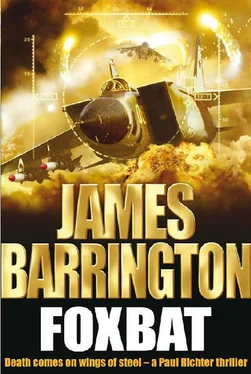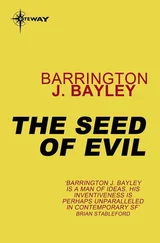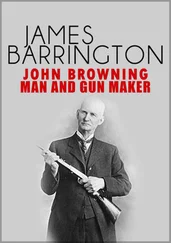Cobra and Viper formation, Sea of Japan
‘November Alpha, Cobra Leader. We’re heading back to Mother and leaving the tactical frequency for our discrete. We’ll listen out on Guard.’
‘Cobra Leader, roger.’
‘Cobras and Vipers, stud six, go.’
In a few seconds, all four pilots had checked in on their private frequency.
‘Cobra Two from Leader. You are sure about this? We’re going to look like a bunch of real wimps if you’re wrong.’
‘I’m sure,’ Richter said, with a confidence that was only slightly forced. ‘Nothing else makes sense, as far as I can see. We’ll check out the satellite imagery when we get back, but I’m betting there’ll be no sign of fuel going into those No-dongs. They were just bait.’
‘I hope you’re right.’
USS Enterprise , North Pacific Ocean
‘Where are they now?’ Rodgers asked, as he walked back into the CIC. ‘Here, sir. Just passing to the east of the DMZ. They’re now at high level, around thirty-five thousand feet and doing about three hundred and fifty miles an hour. It looks like they’re just going home.’
‘Right. Where are the Prowlers and Hornets?’
The operator pointed out two sets of contacts, established in holding patterns well outside North Korean radar coverage. ‘Do you want them recalled, sir?’
‘No, keep them out there. This isn’t over yet.’
Chiha-ri missile base, North Korea
With no small degree of satisfaction, the commanding officer looked around the missile preparation area inside the tunnelled-out shelter. The three HY-2 cruise missiles, mounted on trailers that also held the firing control panels, were almost ready. Technicians swarmed over them making last-minute checks, but all the flight and avionics systems – and, most important of all, the payload – had checked out and he was certain there’d be no delays when the order to launch them was given.
And behind the three HY-2s were six Scud type B missiles, each topped by a warhead containing fifty frangible bomblets full of sarin gas. The cluster was designed to be released some two thousand feet above the ground, ensuring that the nerve gas – lethal in doses as low as one milligram for an average adult – would be dispersed over a reasonably wide area. Predicting the likely death toll had been no better than a guess because of the huge number of variables in the equation, but Pyongyang was hoping for between five hundred thousand and one million casualties.
So it would fall to the dedicated team at Chiha-ri to strike not only the first blow against the capitalist lackeys in Seoul and their treacherous American friends, but also the second. For the commanding officer, it was more than just an honour: it was the culmination of his life’s ambition.
Pyongyang, North Korea
Kim Yong-Su had one task left to perform, for his own protection. He started the tape recorder running, then lifted the receiver of the red telephone and waited for the soft voice he knew so well.
‘Yes, Kim?’
‘Everything is ready. The commanding officer at Chiha-ri has assured me that the cruise missiles are prepared. Pak Je-San’s Foxbat interceptors are fully fuelled and armed, and are waiting for take-off instructions. This is the last point at which we can stop “Golden Dawn”. Do you still wish to proceed?’
The ‘Dear Leader’ hesitated for no more than a few seconds. ‘Yes,’ he said. ‘You may issue the final orders.’
‘Very well.’
But before he used his other telephone to make the calls that would order the assault to begin, Kim Yong-Su removed the cassette tape from the recorder, labelled it and then stored it away in his personal safe. Only then did he consult the paper in front of him and dial the first of the numbers on the list.
T’ae’tan Air Base, North Korea
Pak Je-San put down the telephone with a certain sense of relief. Save for the failure of either the Americans or South Koreans to attack the dummy missiles prepared at the east coast bases, his plan had worked exactly as anticipated. So now it was time for the final act.
He made three short telephone calls to the airfields at Kuupri, Nuchonri and Wonsan in turn, then picked up the microphone and broadcast the order he’d been longing to give for the last six months.
Then he walked across to his office window and stared out. He couldn’t see into the tunnelled-out shelters, but already he could hear the rumble as their armoured doors began to slide open, and a couple of minutes later the first of the Foxbats emerged, towed by a tractor. Ten minutes later, the last of the aircraft was pulled onto the hardstanding, and five minutes after that the first MiG-25 roared down the runway and into the air.
And now all Pak Je-San could do was wait.
Monday
Cobra and Viper formation, over South Korea
‘Cobra Lead, November Alpha on Guard. Request you chop back to tactical.’
‘Roger. Cobras, Vipers, stud four, go.’
As soon as all four aircraft had checked in, the AEW Sea King radar operator passed a hostile contact report that was remarkably similar to his previous broadcast issued when the four Harriers had been approaching their targets on the east coast of the peninsula. He had detected multiple contacts taking off from North Korean airfields. The difference this time was that only four air bases were involved, and all the aircraft were climbing to high level.
In all, the bagman reported that he was holding twenty-one contacts on his radar screen. What he didn’t yet know was what those aircraft were intending to do.
MiG-25 Foxbat, callsign Zero Six, over North Korea
Lieutenant Gennadi Malakov levelled his Foxbat at just under thirty-two thousand feet and glanced to his right and slightly behind. His wingman was holding position about two hundred metres away, exactly where he expected him to be.
Malakov was a recruit from the Russian Air Force, lured to North Korea by the promise of financial independence, though the chance to shoot down one – or, better still, several – American aircraft had encouraged his decision to become a mercenary.
He couldn’t see the rest of the formation under his command but he knew they’d be behind and above him. The pilots had been briefed to fly as three groups of seven aircraft, separated by about one thousand feet of altitude, but until the attack order came all twenty-one MiG-25s would operate as a single entity.
When in service with the Russian National Air Defence Force, the MiG-25 functioned as a ‘manned missile’. The interceptor was fitted with Vozdookh and Lazur radio equipment, and these were integrated with the MiG-25’s Polyot inertial navigation system. The combined package allowed ground controllers to vector the aircraft to a target or patrol area automatically. Only when about to carry out the interception did the pilot switch on the massive RP-25M Saphir radar – second only to the MiG-31’s Zaslon in terms of output power, and known in the West as Fox Fire.
In North Korean service, the same philosophy was followed but, lacking the appropriate ground-based equipment, positive control had to be exercised by the radar stations using radio commands.
‘Zero Six formation, Chunghwa. Make your heading zero one zero, speed six hundred kilometres an hour.’ The voice of the controller was clipped and precise.
‘Zero Six.’
The entire formation turned onto a northerly heading and reduced speed to conserve fuel. The course they were following would take them almost as far north as the border with China before they made the turn towards the DMZ, but this was quite deliberate. Pyongyang had specially instructed that the Foxbats were to remain over North Korea, and well north of the DMZ, until after the first attack had been launched. This was simply to ensure that the MiG-25s would be well clear of the blast radius when the three nuclear devices exploded.
Читать дальше












